Chapter 2
Instrumentation
Aim
The aim of this chapter is to describe the instruments used to administer local anaesthetics in dentistry.
Outcome
After reading this chapter you should have an understanding of the different needles, cartridges and syringes used to deliver local anaesthetics in dentistry.
Introduction and Terminology
Local anaesthetic delivery systems usually consist of these three elements:
-
needle
-
cartridge
-
syringe or pump with cartridge holder.
Those that use a pump also contain additional components such as connecting tubing and communication with a power supply. There are International Standards to which needles, cartridges and conventional syringes are manufactured. At the time of writing an International Standard for syringes designed for intraligamentary injections was being developed. Syringes are designed to administer the local anaesthetic by hand pressure, which may be increased by the use of levers that are found in some specialised syringes. Devices incorporating pumps deliver the solution under computerised control.
Needles
Needles for use with dental syringes comprise of two parts (Figs 2-1a,b). The stainless steel needle itself is coated at the working end with silicon and has a hub that connects to a syringe. The hub may be threaded or unthreaded and is made of plastic or metal. Plastic hubs should be checked for damage after they are attached to the syringe. If there is any sign of damage, such as splitting (Fig 2-2), a new needle should be used as leakage may result. The point of the needle has a chamfered tip.

Fig 2-1a The component parts of a conventional dental needle
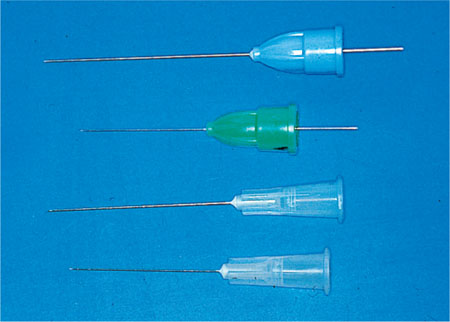
Fig 2-1b Needles used in dental local anaesthesia. The two upper needles are of the conventional type. The two lower needles are of the Luer variety.
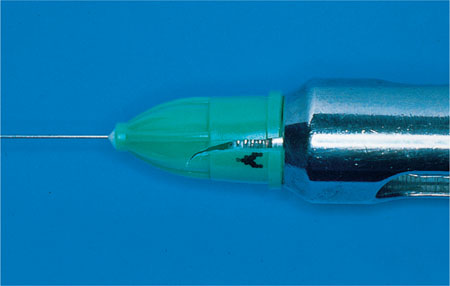
Fig 2-2 This needle has split during attachment to the syringe and should not be used.
The direction of this bevel is indicated in some models by a chevron on the hub. Some needles have more than one bevel at the needlepoint and the degree of chamfer varies between designs. The point is classified as either normal, which has an angle of 12°, or short, with an angle of 18°. The end of the needle opposite to the point is known as the butt-end and this has a chamfer of between 15° and 55°. The manufacturers supply dental local anaesthetic needles in plastic sheaths (Fig 2-3). The contents of the sheath are sterile if the seal joining the two parts is intact. If this seal is not intact the needle should be discarded. Information on the sheath indicates the length and gauge of needle as well as the name of the manufacturer and date beyond which sterility is not guaranteed. Some computerised delivery systems utilise standard Luer medical type needles (Figs 2-4a,b). These too are supplied sterilised but the packaging is different. The working end of the needle is enclosed in a plastic guard and this is encased in a paper “blister pack”. The contents of the blister pack are sterile.
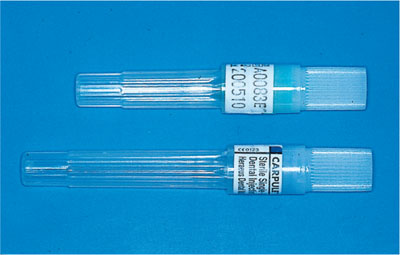
Fig 2-3 Conventional dental needles are supplied sterile within plastic sheaths.
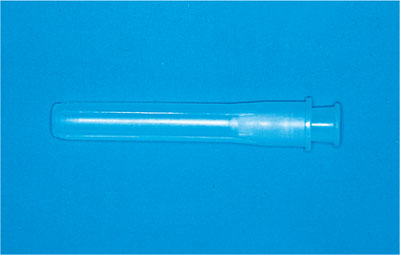
Fig 2-4a Luer type needle with point protected by sheath.
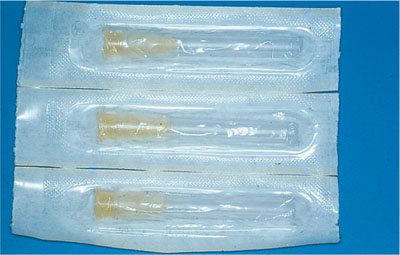
Fig 2-4b Luer type needles are supplied in blister packs.
Dental and Luer lock needles are supplied in a number of lengths and gauges. The gauge is the nominal outside diameter of the needle. In the UK the standard gauges used are 27 and 30. The larger the number the narrower is the needle; 27 gauge needles are 0.4 mm in diameter and 30 gauge have a diameter of 0.3 mm. The effective needle length, which is measured from the end of the hub to the point, varies from 6 mm to 35 mm. The distance from hub to the butt-end ranges from 9 mm to 14 mm.
Needles are for use in one patient only. They may be used for more than one injection in the same patient. However, as sharpness is reduced after each tissue penetration it may be advantageous to change needles after each injection.
Cartridges
Cartridges consist of three components (Fig 2-5):
-
a cylinder
-
a plunger
-
a cap.

Fig 2-5 The component parts of a dental local anaesthetic cartridge.
The cylinder is made of glass or plastic. This must be clear to allow visualisation of the contents. The following information is supplied on the cylinder:
-
contents
-
concentrations of anaesthetic and vasoconstrictor
-
expiry date
-
manufacturer’s name
-
batch number.
Glass cylinders are suitable for all types of injections used in dentistry. Plastic cylinders should not be used in intraligamentary syringes (see below) as the forces employed can distort the cylinder leading to loss of solution from the plunger end of the cartridge.
Cartridges used in the UK contain various volumes of solution. Volumes of 1.7 mL, 1.8 mL, 2 mL and 2.2 mL may be found. In most other countries the standard is 1.8 mL and eventual globalisation of production may result in this being the universal size. The maximum length of a 1.8 mL cartridge is 64.6 mm; the corresponding value for the 2.2 mL type is 77.5 mm. The maximum external diameter for cartridges including any applied label is 9.0 mm.
The plunger is made of rubber. The absolute constituents of different plungers vary. Importantly, some contain latex. When dealing with a patient with a severe latex allergy such plungers should be avoided. If in doubt the manufacturer should be consulted. Plungers found in cartridges used in the UK are of two types:
-
solid
-
hollow.
The hollow plunger is that designed to combine with the special plunger rod found in Astra self-aspirating syringe systems and its function is described below.
The cap at the end of the cartridge opposite to that which holds the plunger is composed of a rubber diaphragm contained in an aluminium metal ring. This diaphragm is penetrated by the needle, allowing the needle lumen access to the anaesthetic solution.
Cartridges should not be used if:
-
there is no information about the contents on the cylinder
-
the expiry date has passed
-
the solution is cloudy
-
there is a crack or fracture in the cylinder
-
there is a large air bubble obvious in the solution
-
the plunger is extruded from the end of the cylinder.
If there is no information on the cartridge or some of the information is missing (such as no expiry date) the cartridge must be discarded, as the quality and />
Stay updated, free dental videos. Join our Telegram channel

VIDEdental - Online dental courses


